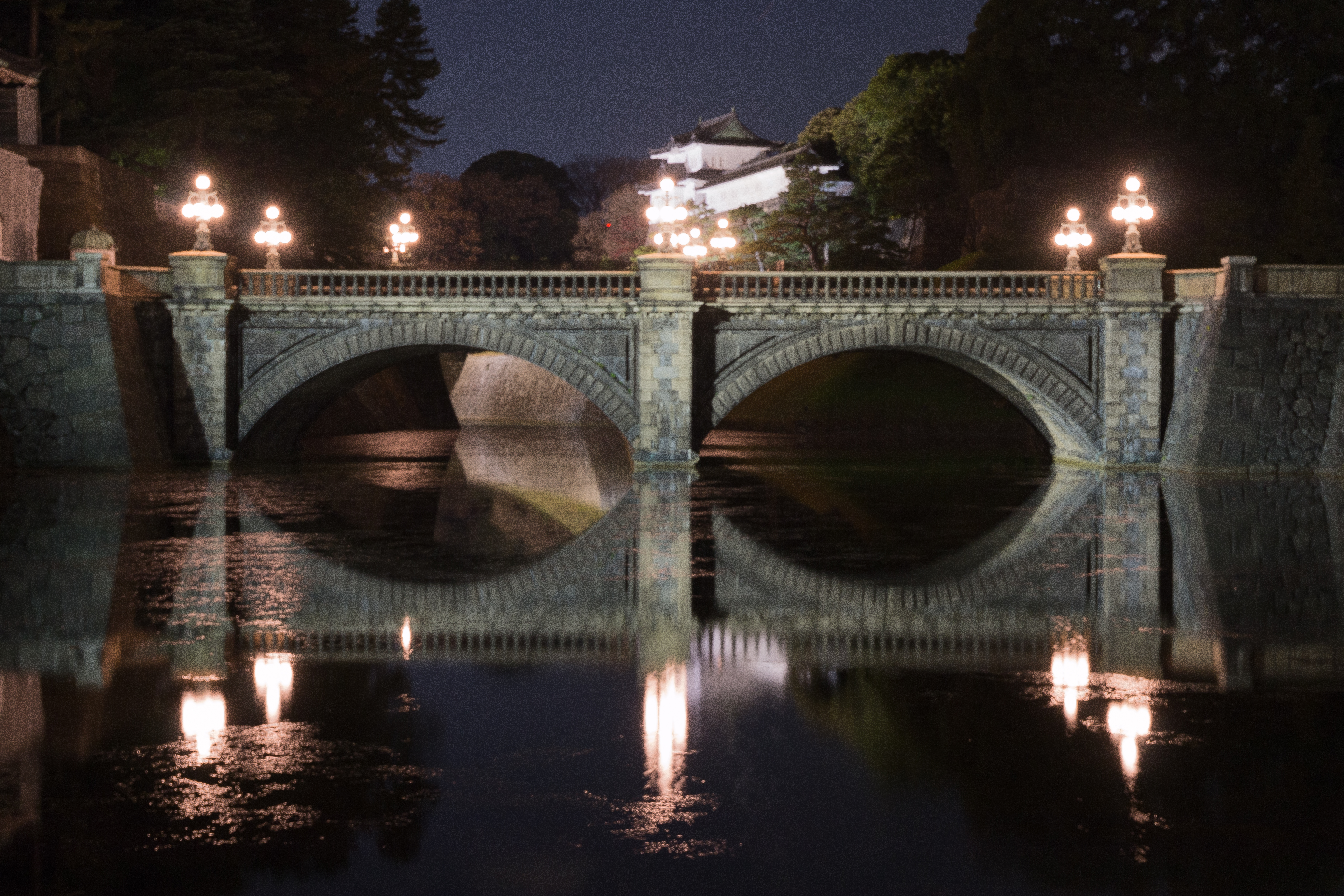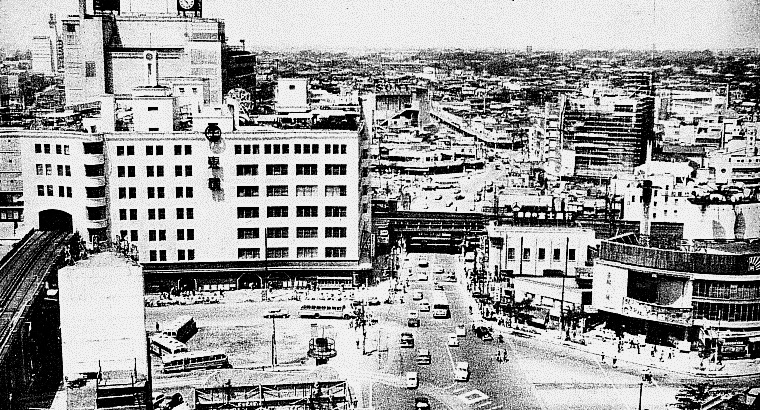|
TH Liner
The is a limited-stop "Home Liner"-style service to and from Kuki Station in Saitama on the Tobu Isesaki Line operated by the private railway operator Tobu Railway in Japan since June 2020. Service outline ''TH Liner'' services operate in the mornings on weekdays and weekdays in the " up" direction (two services) from in Saitama Prefecture to in Tokyo, and in the evenings (weekdays and weekends) in the " down" direction (five services) from Kasumigaseki to Kuki. In the up direction, a supplement of 580 yen (300 yen for children) is required for travel between the serviced Hibiya Line stations and Sengendai station, and 680 yen (350 yen for children) beyond as far as Kuki station. No supplementary fare is required for passengers boarding the service between Kasumigaseki to Ebisu. All seats are reserved, and the supplementary tickets indicate which car to ride in. Rolling stock ''TH Liner'' services are operated by a fleet of 70090 series 7-car electric multiple units (EM ... [...More Info...] [...Related Items...] OR: [Wikipedia] [Google] [Baidu] |
Tobu Isesaki Line
The is a Japanese railway line operated by the private railway company Tobu Railway, extending from Tōbu-Dōbutsu-Kōen Station in Saitama to Isesaki Station in Gunma Prefecture. The Isesaki Line can refer to the entire section between Asakusa - Isesaki and Oshiage - Hikifune, but from March 2012, the 41.0 km section south of Tōbu-Dōbutsu-Kōen was branded as the Tobu Skytree Line in conjunction with the opening of the Tokyo Skytree tower. Descriptions ;Track: :single: − 39.9 km :double: the rest Operation Service patterns Stops and operated sections are as of 2017. ; (announced as or for short) :*Tōbu-Dōbutsu-Kōen − Ōta. Connection with Express. Three per hour, with one between Kuki and Tatebayashi. :*Ōta − Isesaki. One per hour per direction, conductorless. ; :Between Asakusa and Tōbu-Dōbutsu Kōen, Kuki or Minami-Kurihashi on Nikkō Line. ; :Early morning and late night. Down to Tōbu-Dōbutsu-Kōen, Kuki or to Minami-Kurihashi on the Nikkō Li ... [...More Info...] [...Related Items...] OR: [Wikipedia] [Google] [Baidu] |
Ueno Station
is a major railway station in Tokyo's Taitō ward. It is the station used to reach the Ueno district and Ueno Park—which contains Tokyo National Museum, The National Museum of Western Art, Ueno Zoo, Tokyo University of the Arts and other famous cultural facilities. A major commuter hub, it is also the traditional terminus for long-distance trains from northern Japan, although with the extension of the Shinkansen lines to Tokyo Station this role has diminished in recent years. A similar extension of conventional lines extended Takasaki Line, Utsunomiya Line and Joban Line services to Tokyo Station via the Ueno-Tokyo Line in March 2015, using existing little-used tracks and a new viaduct; the Ueno-Tokyo Line connects these lines with the Tokaido Main Line, allowing through services to Shinagawa, Yokohama, Odawara and Atami stations. Ueno Station is close to Keisei Ueno Station, the Tokyo terminus of the Keisei Main Line to Narita Airport Station. Lines This station is serv ... [...More Info...] [...Related Items...] OR: [Wikipedia] [Google] [Baidu] |
Tokyo Metro Tozai Line
The is a rapid transit line in Tokyo and Chiba Prefecture, Japan, owned and operated by Tokyo Metro. Its name translates to "''East-West Line"''. The line runs between Nakano in Nakano-ku, Tokyo and Nishi-Funabashi in Funabashi, Chiba Prefecture. The Tōzai Line was referred to as Line 5 during the planning stages; the seldom-used official name is . The line carries an average of 1,642,378 passengers daily (2017), making it the busiest line on the Tokyo Metro network. On maps, diagrams and signboards, the Tōzai Line is shown using the color "sky blue" ( ; #009bbf) and its stations are given numbers using the letter "T". Overview The line runs through central Tokyo from east to west via Takadanobaba, Waseda, Ōtemachi, Nihombashi, Kiba and Urayasu. It was opened as a bypass route for the Chuo Rapid Line and the Sobu Line, which had been incredibly congested at the time. It is the only Tokyo Metro line to extend into Chiba Prefecture (although the Shinjuku Line operated ... [...More Info...] [...Related Items...] OR: [Wikipedia] [Google] [Baidu] |
Chūō, Tokyo
is a Special wards of Tokyo, special ward that forms part of the heart of Tokyo, Japan. The ward refers to itself in English as Chūō City. It was formed in 1947 as a merger of Kyōbashi, Tokyo, Kyobashi and Nihonbashi wards following Tokyo City's Local Autonomy Act, transformation into Tokyo Metropolis. Chūō-ku, as a combination of Kyobashi and Nihonbashi, is the core of Shitamachi, the original downtown center of Edo-Tokyo. Literally meaning "Central Ward", it is historically the main commercial center of Tokyo, although Shinjuku has risen to challenge it since the end of World War II. The most famous district in Chūō is Ginza, built on the site of a former silver mint from which it takes its name. The gold mint, or , formerly occupied the site of the present-day Bank of Japan headquarters building, also in Chūō. As of October 1, 2020, the ward has a resident population of 169,179, and a population density of 16,569 persons per km2. The total area is 10.21 km2. ... [...More Info...] [...Related Items...] OR: [Wikipedia] [Google] [Baidu] |
Chiyoda, Tokyo
is a special ward located in central Tokyo, Japan. It is known as Chiyoda City in English.Profile ." ''City of Chiyoda''. Retrieved on December 28, 2008. It was formed in 1947 as a merger of and wards following 's transformation into Tokyo Metropolis. The modern Chiyoda ward exhibits contrasting |
Tokyo Metro Chiyoda Line
The is a subway line owned and operated by Tokyo Metro in Tokyo, Japan. On average, the line carries 1,447,730 passengers daily (2017), the second highest of the Tokyo Metro network, behind the Tozai Line (1,642,378).Tokyo Metro station ridership in 2010 ''Train Media (sourced from Tokyo Metro)'' Retrieved July 23, 2018. The line was named after the Chiyoda ward, under which it passes. On maps, diagrams and signboards, the line is shown using the color green (), and its stations are given numbers using the letter "C". Overview The 24.0 km line serves the wards of[...More Info...] [...Related Items...] OR: [Wikipedia] [Google] [Baidu] |
Tokyo Metro Marunouchi Line
The is a subway line in Tokyo, Japan, operated by Tokyo Metro. The line runs in a U-shape between Ogikubo Station in Suginami and Ikebukuro Station in Toshima, with a branch line between Nakano-Sakaue Station and Hōnanchō Station. The official name is . The line was named after the Marunouchi business district in Chiyoda, Tokyo, under which it passes. On maps, diagrams and signboards, the line is shown using the color red (), and its stations are given numbers using the letters "M" for the main line and "Mb" for the branch line. Overview The Marunouchi Line is the second line to be built in the city, and the first one constructed after the Second World War. The route is U-shaped, running from Ogikubo Station in the west of the city via the commercial and administrative district of Shinjuku through to the Marunouchi commercial center around Tokyo Station, before turning back and heading to Ikebukuro. Along with the Ginza Line, it is self-enclosed and does not have any th ... [...More Info...] [...Related Items...] OR: [Wikipedia] [Google] [Baidu] |
Tokyo Metro Ginza Line
The is a subway line in Tokyo, Japan, operated by Tokyo Metro. The official name is . It is 14.3 km long and serves the wards of Shibuya, Minato, Chūō, Chiyoda, and Taitō. It is the oldest subway line in Asia. The line was named after the Ginza commercial district in Chūō, Tokyo, under which it passes. On maps, diagrams and signboards, the line is shown using the color orange(), and its stations are given numbers using the letter "G". Operations Almost all Ginza Line trains operate on the line's full length from Asakusa to Shibuya. However, two trains depart in the early morning from Toranomon, and some late-night trains from Shibuya are taken out of service at Ueno. Along with the Marunouchi Line, it is self-enclosed and does not have any through services with other railway lines. On weekdays, trains run every two minutes in the morning peak, every 2 minutes and 15 seconds in the evening peak, and every 3 minutes during the daytime. The first trains start from S ... [...More Info...] [...Related Items...] OR: [Wikipedia] [Google] [Baidu] |
Toei Oedo Line owned and managed by the Bureau of Urban Development, Tokyo Metropolitan Government
{{disambig ...
Toei or Tōei may refer to: * Tōei, Aichi, Japan * Toei Company, Japanese film and television production company ** Toei Animation, their animation subsidiary * , Japanese abbreviation meaning "operated by the Tokyo Metropolitan Government" **Transportation lines operated by the Tokyo Metropolitan Bureau of Transportation (TMBT) *** Toei Subway (都営地下鉄) *** Toei Bus (都営バス) ** Toei Jūtaku (都営住宅), public housing Public housing is a form of housing tenure in which the property is usually owned by a government authority, either central or local. Although the common goal of public housing is to provide affordable housing, the details, terminology, def ... [...More Info...] [...Related Items...] OR: [Wikipedia] [Google] [Baidu] |
Minato, Tokyo
is a special ward in Tokyo, Japan. It is also called Minato City in English. It was formed in 1947 as a merger of Akasaka, Azabu and Shiba wards following Tokyo City's transformation into Tokyo Metropolis. The modern Minato ward exhibits the contrasting Shitamachi and Yamanote geographical and cultural division. The Shinbashi neighborhood in the ward's northeastern corner is attached to the core of Shitamachi, the original commercial center of Edo-Tokyo. On the other hand, the Azabu and Akasaka areas are typically representative Yamanote districts. , it had an official population of 243,094, and a population density of 10,850 persons per km2. The total area is 20.37 km2. Minato hosts many embassies. It is also home to various domestic companies, including Honda, Mitsubishi Heavy Industries, MinebeaMitsumi, Mitsubishi Motors Corporation, NEC, Nikon, Sony, Fujitsu, Yokohama Rubber Company, as well as the Japanese headquarters of a number of multi-national firms, includ ... [...More Info...] [...Related Items...] OR: [Wikipedia] [Google] [Baidu] |
Shibuya
Shibuya ( 渋谷 区 ''Shibuya-ku'') is a special ward in Tokyo, Japan. As a major commercial and finance center, it houses two of the busiest railway stations in the world, Shinjuku Station (southern half) and Shibuya Station. As of April 1, 2022, it has an estimated population of 228,906 and a population density of 15,149.30 people per km2 (39,263.4/sq mi). The total area is 15.11 km2 (5.83 sq mi). The name "Shibuya" is also used to refer to the shopping district which surrounds Shibuya Station. This area is known as one of the fashion centers of Japan, particularly for young people, and as a major nightlife area. History Heian to Edo period Shibuya was historically the site of a castle in which the Shibuya family resided from the 11th century through the Edo period. Following the opening of the Yamanote Line in 1885, Shibuya began to emerge as a railway terminal for southwestern Tokyo and eventually as a major commercial and entertainment center. Meiji to Showa peri ... [...More Info...] [...Related Items...] OR: [Wikipedia] [Google] [Baidu] |


.jpg)




